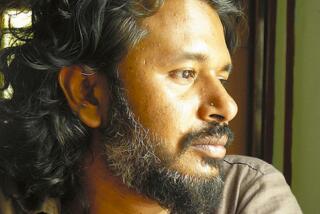Wanted: tourists on the beaches
- Share via
The timing of the Indian Ocean tsunami was particularly cruel for Sri Lanka: A truce in effect for more than two years between the government and the rebel Tamil Tigers had ended years of violence and finally started to make a difference to the island nation. Then, on Dec. 26, the water swept in. Although many residents struggle to rebuild, some areas of this beach-rich country remain open and unaffected, beckoning tourists and their much-needed dollars.
Country at a glance
Sri Lanka is an island nation of 20 million with turquoise waters, palm-shaded white sand beaches and a mix of Buddhist, Hindu and other religions. The number of visitors increased by 25% in 2003 as travelers discovered its pleasures.Toll on tourism
The tsunami didn’t wreak havoc just on the island and its people; it also ravaged a fast-growing part of the economy, one that was starting to improve people’s lives. Tourism accounts for 12% of the country’s gross domestic product.Reason to be optimistic?
The resilience of those who survived. For instance, Wisni Niranjan recently was building a small wooden hut. On the side he had mounted a dive flag. He explained that this had been the location of a popular dive shop and school. The owner and many in his family were killed and the dive complex was reduced to a bit of broken concrete. But Wisni, who had been an employee, was intent on rebuilding.More personal stories
Dammika, the owner of a guesthouse in Unawatuna, said he lost his father, aunt and brother, and he also lost his livelihood. He must worry about how to feed the surviving members of his family and how to pay for the materials to repair his heavily damaged home and business. “I wish people would return because we need them badly,” he said, “and, also, having people enjoying our beach had become a part of our life.”Will travelers return? Should they?
Ramyasiri Kumarawadu, who owned a guesthouse near the beach in Matara, a south coast town in which hundreds died, said, “Yes, we need travelers for our businesses, but we need them for our happiness too. Having people from other places around us is normal; not having them here is not.”Why not wait?
It’s always difficult to know when to visit a country after a disaster, but many people think such a trip is an opportunity to support the recovery. Everyone has a story and would like a chance to share it.Getting there
The main airport in Colombo is receiving flights on its usual schedule. From LAX, Cathay Pacific and Singapore offer connecting service (change of planes). United, American, Singapore, Malaysia and British airlines offer flights that connect to Sri Lankan Airways, either in Asia or London. Restricted round-trip fares start at $1,451 until May 15, then increase to $1,779 until Aug. 31.To learn more
The only somewhat up-to-date traveler information is on the Tsunami Information Management Centre for Sri Lanka website https://www.contactsrilanka.org .Where to stay
In Galle, the 16th century Portuguese fort was protected from the water by its huge old walls. Inside, the fort community is flourishing, and several hotels are open, including the new five-star resort, the Amangalla. Doubles from $225; 011-94-91-223-3388 https://www.amanresorts.com . Several fine hotels were undamaged in the lush green knolls west of the southern beach town of Tangalla. The Claughton is a beautiful villa. Doubles from $150; 011-94-41-225-5087.Where to eat
In Sri Lanka, restaurant choices are limited. But many hotels have eating facilities, and these are often the venues of choice for travelers. In beach towns that have mostly recovered, such as Hikkaduwa, simple casual cafes right on the sand are back in business. Elsewhere, markets and stores are open.— Ryan Ver Berkmoes Lonely Planet
More to Read
Sign up for The Wild
We’ll help you find the best places to hike, bike and run, as well as the perfect silent spots for meditation and yoga.
You may occasionally receive promotional content from the Los Angeles Times.






